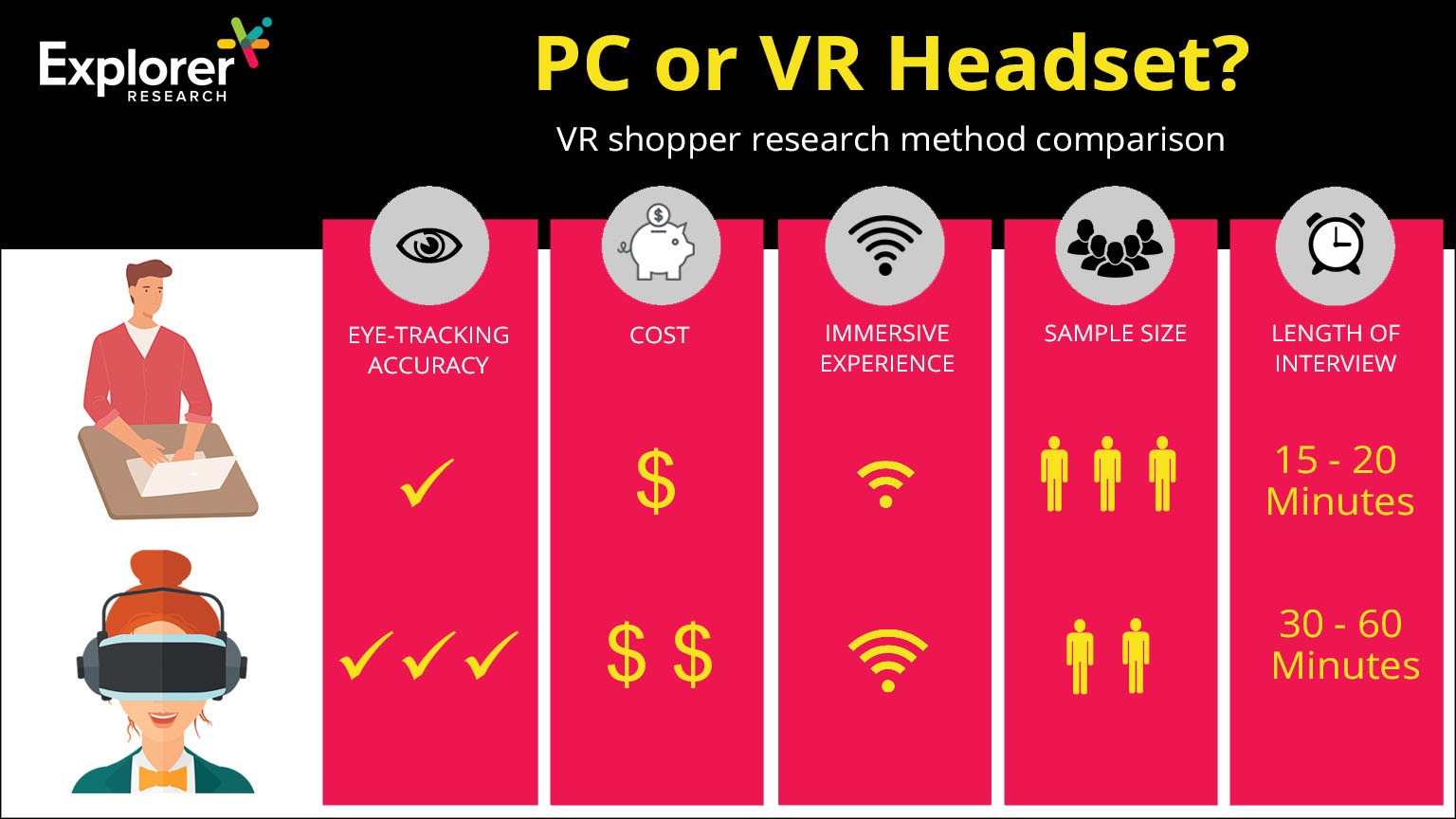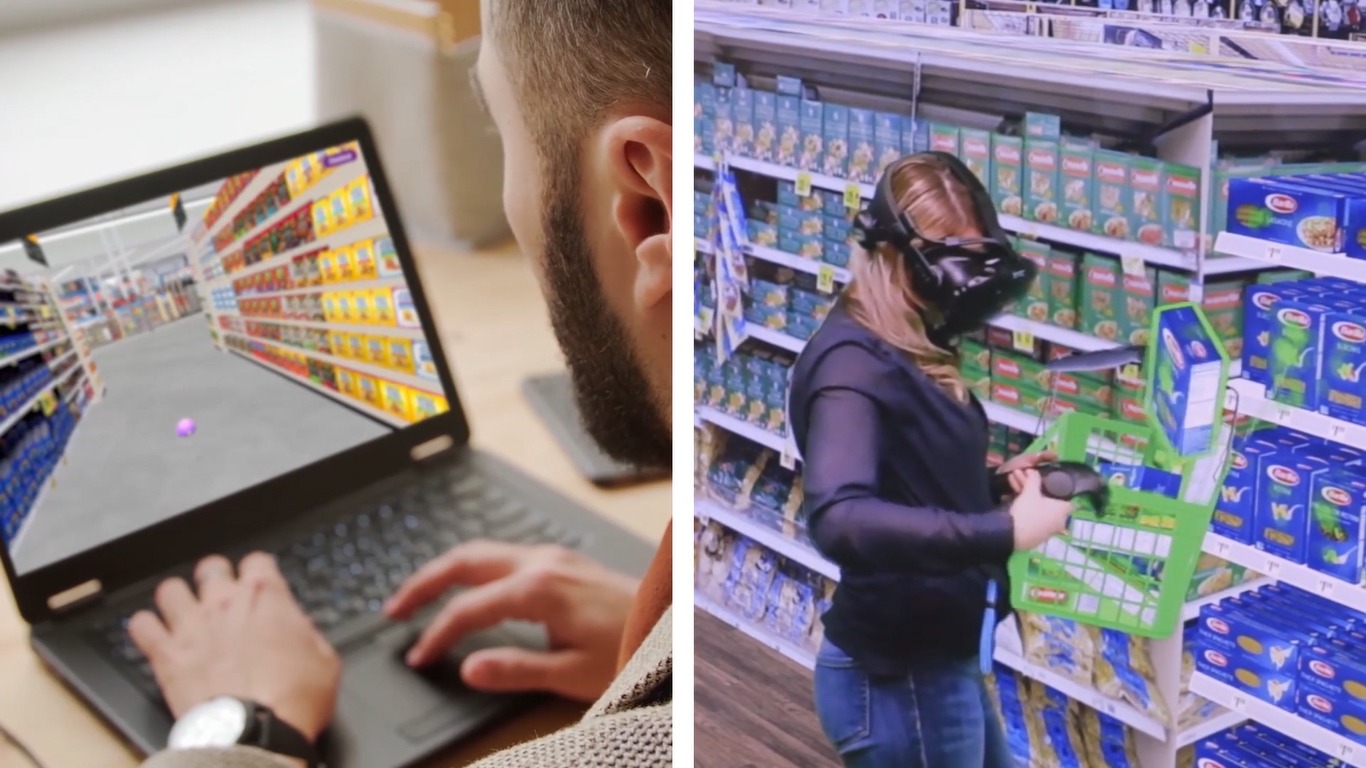There are choices when it comes to conducting virtual shopper research. When you say “VR” people tend to think about headset-based VR, but today you can also do online VR research. Fortunately, there is a choice.
HMD vs. PC
Another name for VR goggles is HMD or “virtual head-mounted device.” Perhaps the best example of these in use are virtual reality video games where the user is fully immersed in a virtual world. This feels very realistic and you feel like you actually exist in that space.
However virtual simulations can work on a PC as well. All that’s required is a PC and a Wi-Fi connection – no headset. You can still move in the environment and see the same realistic surrounding as in the scenario above. Your view is what you see on your monitor.
Either method can be used and they each have pros and cons which we’ll look at now.

HMD (Head Mounted Device)
Pros
More realistic – Because the shopper can actually move around, they behave just as they would in a real store. They can stand, walk around and bend down to pick up products. This is ideal when you want to test planograms or package size changes. The immersive environment and ability to pick up life-size products provide a realistic simulation of a real store.
Eye-tracking – Eye-tracking is built into the headset capturing very accurate viewing in the environment.
More immersive – The most immersive way to experience a physical store without really being there is to use HMD – shoppers feel like they are actually in store.
Better for total store / large section research – In-person requires less network bandwidth so larger sections or total store environments can be tested. This allows the researcher to answer more complex questions. Also, these tests are typically conducted in a central location leading to a longer interview length.
Both qualitative and quantitative data – With headset in-person approaches, large sample sizes can be married with qualitative research for a quali-quant approach that allows for deeper exploration to answer some of the “why” behind the behavior.
Cons
Cost – To conduct VR headset based research, it is typically conducted in labs or central location which can increase the price of the research versus other methodologies.
PC
Pros
Cost-effective – The cost of conducting online research is generally lower than in-person.
Large sample size – More respondents can be recruited with an online methodology.
Eye-tracking – Webcam eye-tracking measures visual attention.
Cons
Section only studies – Online research studies are better for small sections given the limitations of having a respondent view a total store online.
Summary
Both online and headset based methods produce results that are highly correlated with the physical world, and each has its pros and cons depending on your research objectives and budget.
Online 3D virtual reality can create a realistic category view and movements throughout the environment can be tracked as well as the ability to pick up and view products from all sides. With the advent of 5G, online 3D research will continue to get better. However, in-person HMD tests may be more beneficial if you want to do a multi-category, planogram, or large store test. Untethered headsets are now the norm and controllers are being replaced with glove-based technologies.
Contact us if you would like to learn more about virtual shopper research.
